

A compilation of the most common questions and to which we have given answers. If there is a single question that you think we should add to the compilation, send us an email and we will add your question with a correct answer.
Yes it existed in the 80's. and the project was taken seriously. Volvo Trucks had a completely different attitude than they have today. If you did not get the long-distance transports, you had to be part of the distribution. A project group was formed between Volvo Trucks, Kalmar Lagab and Gävle Vaqgnverkstad. Volvo provided their newly developed vehicles with air suspension. The system was built on a full scale and test runs were done internally by Volvo between two of their factories. CCT was driven in parallel in the same traffic that was driven with a side loader. The test lasted for 6 months of daily driving
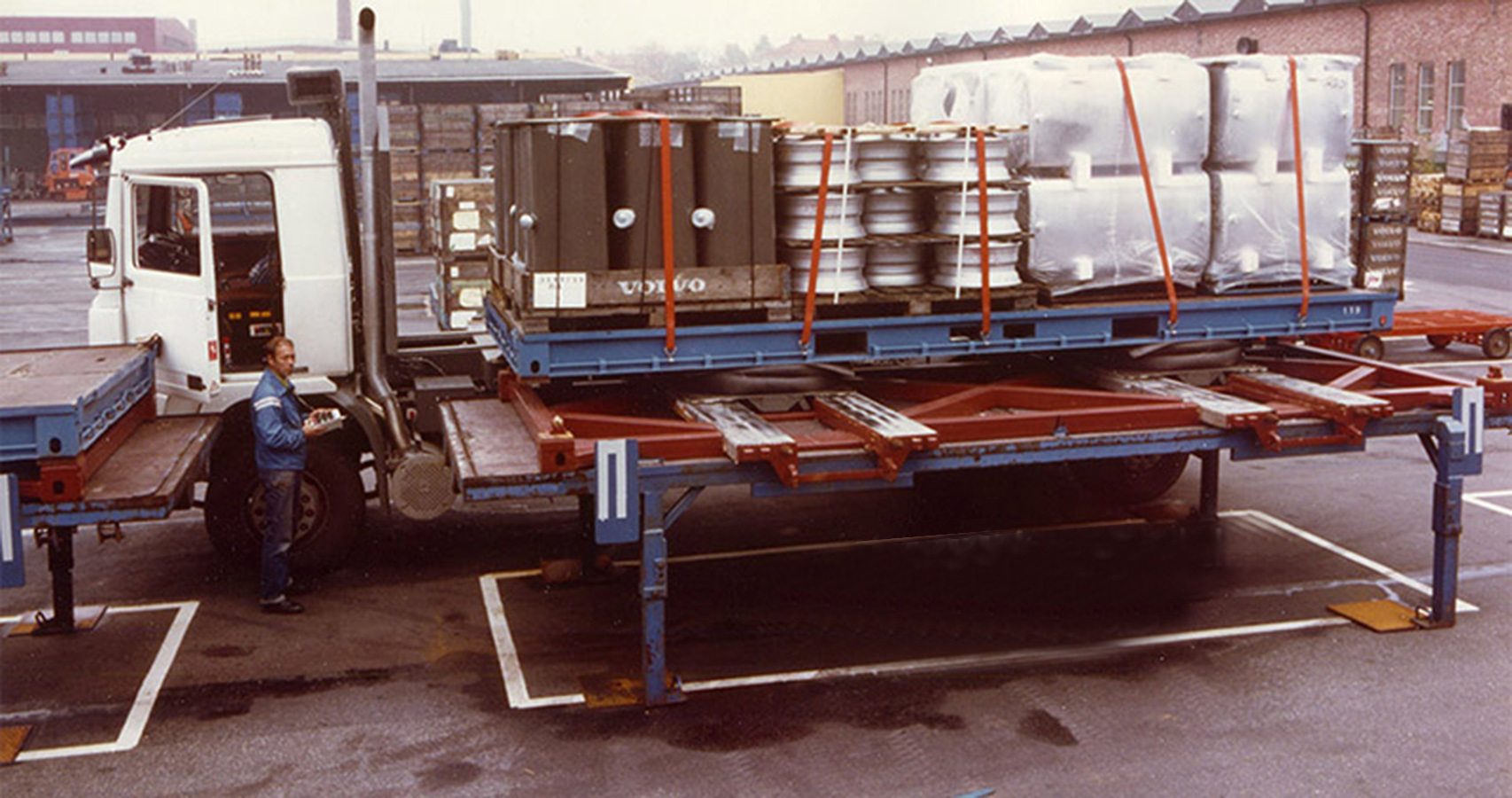
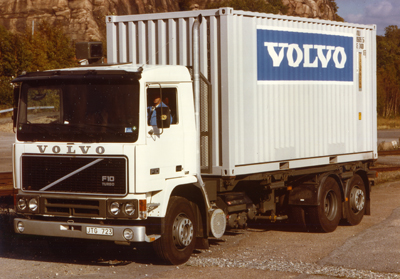
In addition to the CCB car, 6 railway carriages were equipped with additional frames to be able to transport containers. NSB ran winter tests between Oslo and Trandheim for 3 months.
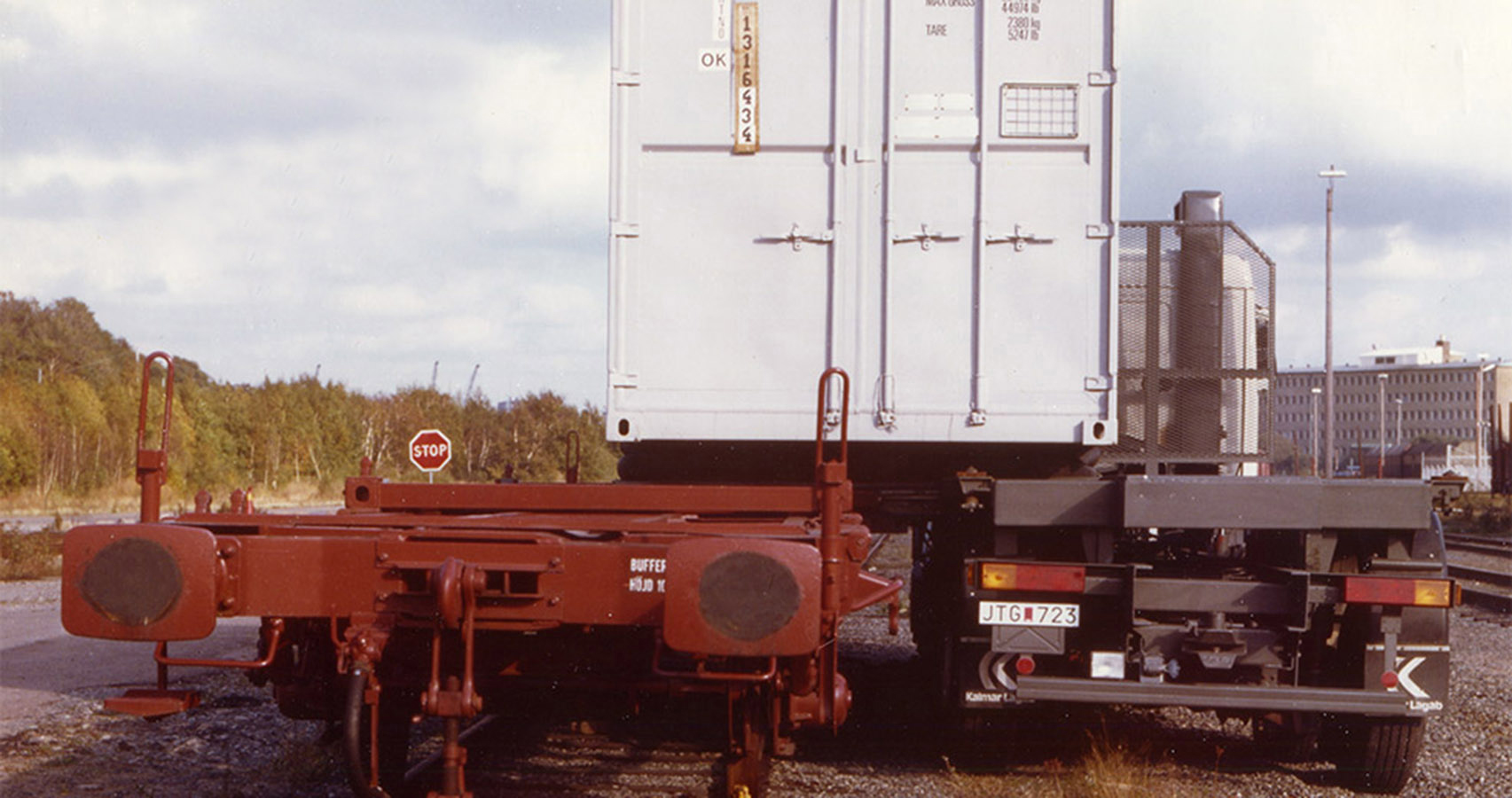
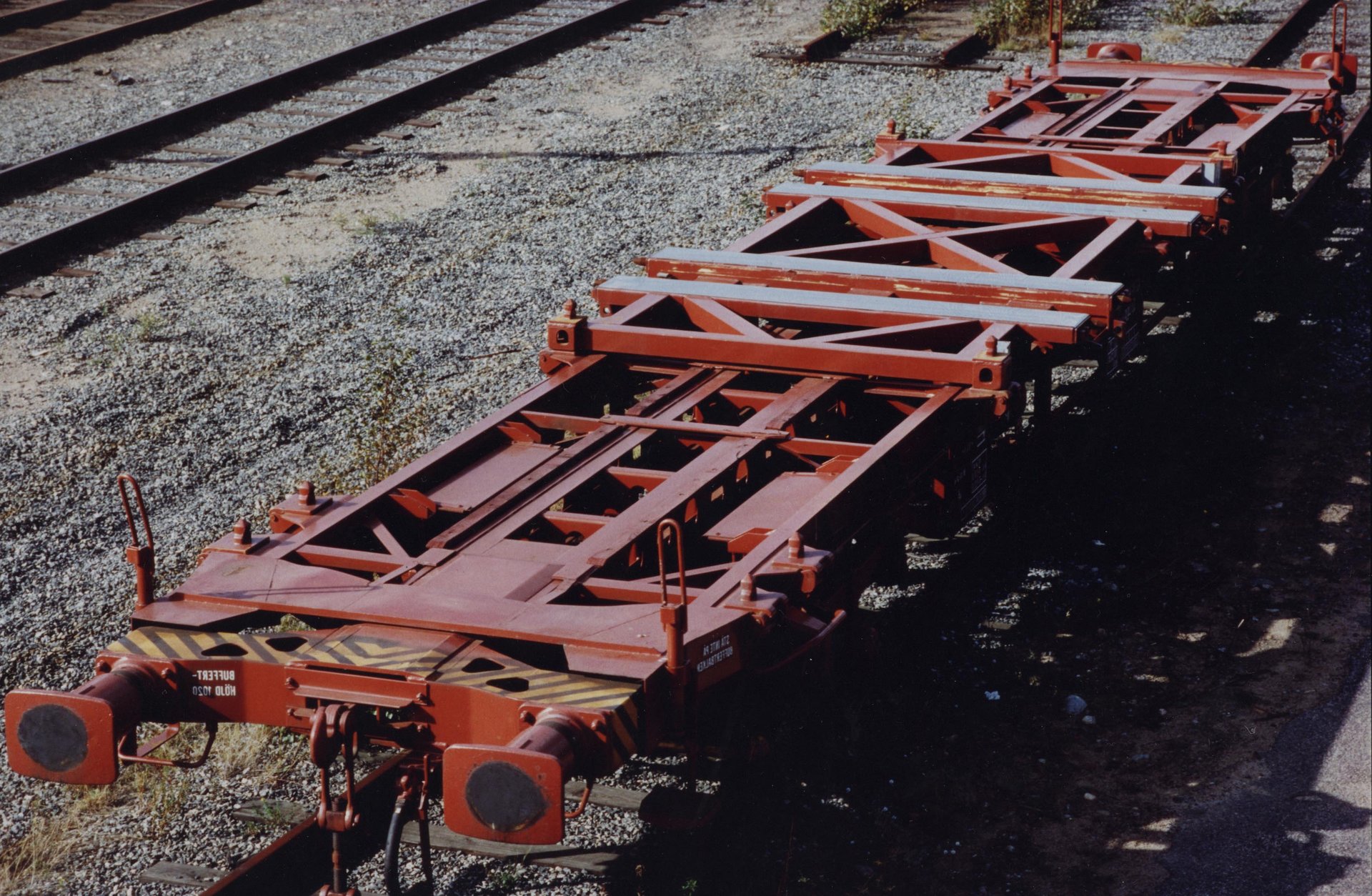
Response. Svelast tested running containers between IKEA's facility in Kungens kurva and SJ's terminal
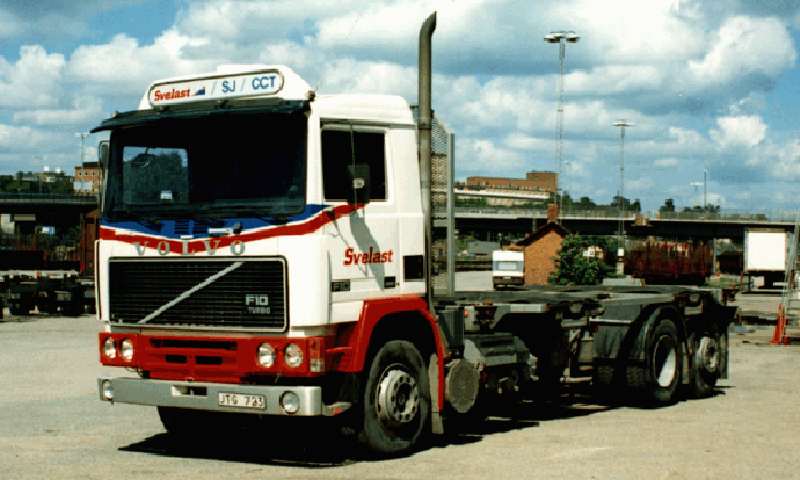
Response. The Dutch consultant NEA had been appointed to look at what an international system would look like to meet future requirements and solutions. They identified the CCT system as the best system to form the basis of the future transport structure in the EU. The IRU also issued a press release with the result.
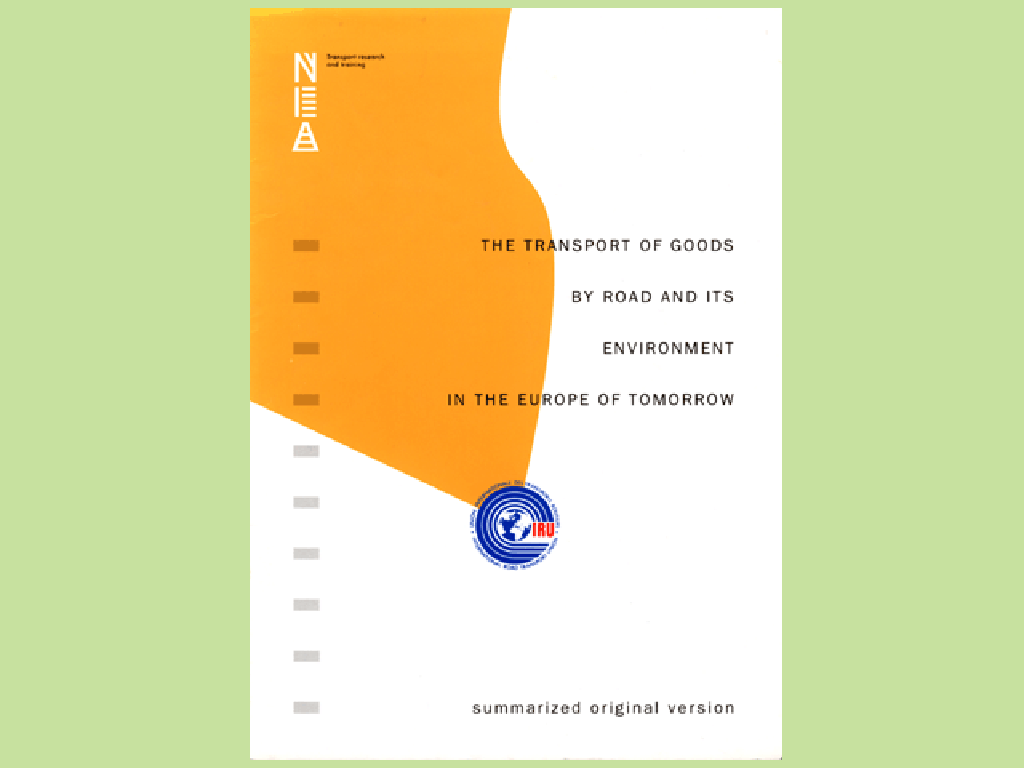
Response. British Rail tested CCT and with very interesting and good results. The existing CCT is moved to England. But England has been based on a 30-foot container, which is why a special version of a trailer that handles 30-foot units was built. It was self-sufficient in energy, which is why any tractor could handle a trailer.
British Rail was prepared to make a major investment in a CCT sub-system for the transport of unit loads. Everything was handled, among other things, from the large research center that existed in Derby with over 2,000 employees. Then Margret Thatcher entered the market and privatized Britih Rail. Then all of a sudden there was nothing left of the research station in Dery. Everything stopped and all major investments went up in smoke.
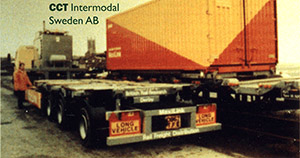
Response. Over the years, a number of applications have been made to various authorities responsible for allocating funds for research and development projects. We applied and applied for funding to build a CCT terminal at the Swedish Energy Agency. As usual, it was rejected, but the motivation is probably the absolute worst we have received. "The system is too expensive to implement and in addition the system does not handle 20 foot ISO containers". A completely grotesque motivation and has nothing to do with reality. A preschool student sees that the system handles 20 foot containers. But not the director general of the energy authority together with the expert group that was available. That FFI has a part in this cannot be denied. A refusal is followed by the last sentence "The decision has been made and cannot be appealed". No matter how crazy the decision is, the authority manages with this letter.

Response. We had gathered stakeholders in transport and handling in Swedish industry. There were large buyers of transports, there were manufacturers, there was a large haulage company and finally all parties in the market. In a large joint meeting where Vinnova also participated, it was decided that a prototype of a terminal based on CCT technology would be built. Vinnova promised to raise a lot of capital to realize the project. Tests were to be carried out and the field operator had sufficient genetic traffic data to start a pilot line on the railway. The transport cost for the line in question could be reduced by 40-45%.
When it was decided and we were to start driving, FFI acted and a number of millions that Vinnova promised were removed. Only funds were left to develop the distribution vehicle. Vinnova moved the person who participated in the decision to Gothenburg. They were procuring a project manager within Vinnova for 9 months. A project leader got stuck in the cloud of smoke that came from a volcanic eruption and he is still missing. That FFI has a decisive finger in the game is quite clear. We developed a distribution vehicle but the project faltered because we did not get opportunities to develop the railway part.
Response. This is just one in a series of projects that have been discussed with the Swedish Transport Administration. A number of companies that wanted to expand in Norrland had gathered to discuss a project that would open up with traffic on Umeå and with reversing traffic within 24 hours. Represented were the grocery trade, which saw opportunities for expansion in Norrland. Transporting by truck took too long and cost too much money. KTH, which was involved in the project, had gone through the project and set up the schedule for the train commuter who would be able to handle the traffic. In a meeting at the Swedish Transport Administration, goods owners, manufacturers, train operators and all parties required to get started with the project were narrowed down. There was also an investor who said he was willing to be responsible for the investments if the project could show the required returns.
During the discussion, the Swedish Transport Administration was asked whether they could finance the calculation that the investor requested. The work was to be carried out by KTH and AMCCT AB. The Swedish Transport Administration answered no, you have no money. When pointing out that within the EU project Shift2 rail there was EU money that the Swedish Transport Administration administered. Answer, we do not have more money within shift2rail than is enough to cover costs for Trafikvekte's staff to be able to attend international meetings within shift2rail. A scam right through. We had to end the meeting and stated that it was not possible to start a profitable traffic shuttle to Umeå even though all participants were positive about implementing the project. Three days after we ended the meeting with the possibilities of receiving funding from the Swedish Transport Administration, the Swedish Transport Administration announced that it will invest 40 million per year for freight traffic for 12 years. Then suddenly there was money. Definitely a clear action frame from FFI again.
The message was clear does not concern the freight traffic that exists on road transport!
Answer.
It would have been completely different:
- The long-distance transports had taken place exclusively by rail and at low prices.
- The distribution has been carried out with trucks that have been optimized for distribution.
- Automatic terminals to handle the transhipment under existing power lines at simple terminals and low transfer costs.
- Significantly several simple terminals, which has made it possible to optimize transport.
In the current situation when everything has to be electrified, it has been easy to do, as in our case we would only have needed to electrify the distribution. With many more simpler terminals, the distribution distance has been kept at reasonable distances. Electrification possible.
TFK, which is to be considered a neutral and impartial investigative institute, deliberately lies about the handling equipment CCT. It is written and stated that CCT does not handle containers according to the norm and in the ISO corner boxes. This is in line with the earliest version of CCT but the technology has changed. CCT has been lifting in the corner boxes for a long time. It is obvious that TFK is still making this lie to prevent the development of CCT, as it would affect TFK's stakeholders on the truck side and the truck handling companies. We regard TFK as an extremely frivolous company today.
Answer, yes and that is the only really viable way to create a real and efficient future solution for intermodal transport. They are fast and energy efficient and meet every environmental claim that can be placed on transport. The truck has reached the end of the road and it is only to realize this for a better transport future.
This site was created with the Nicepage